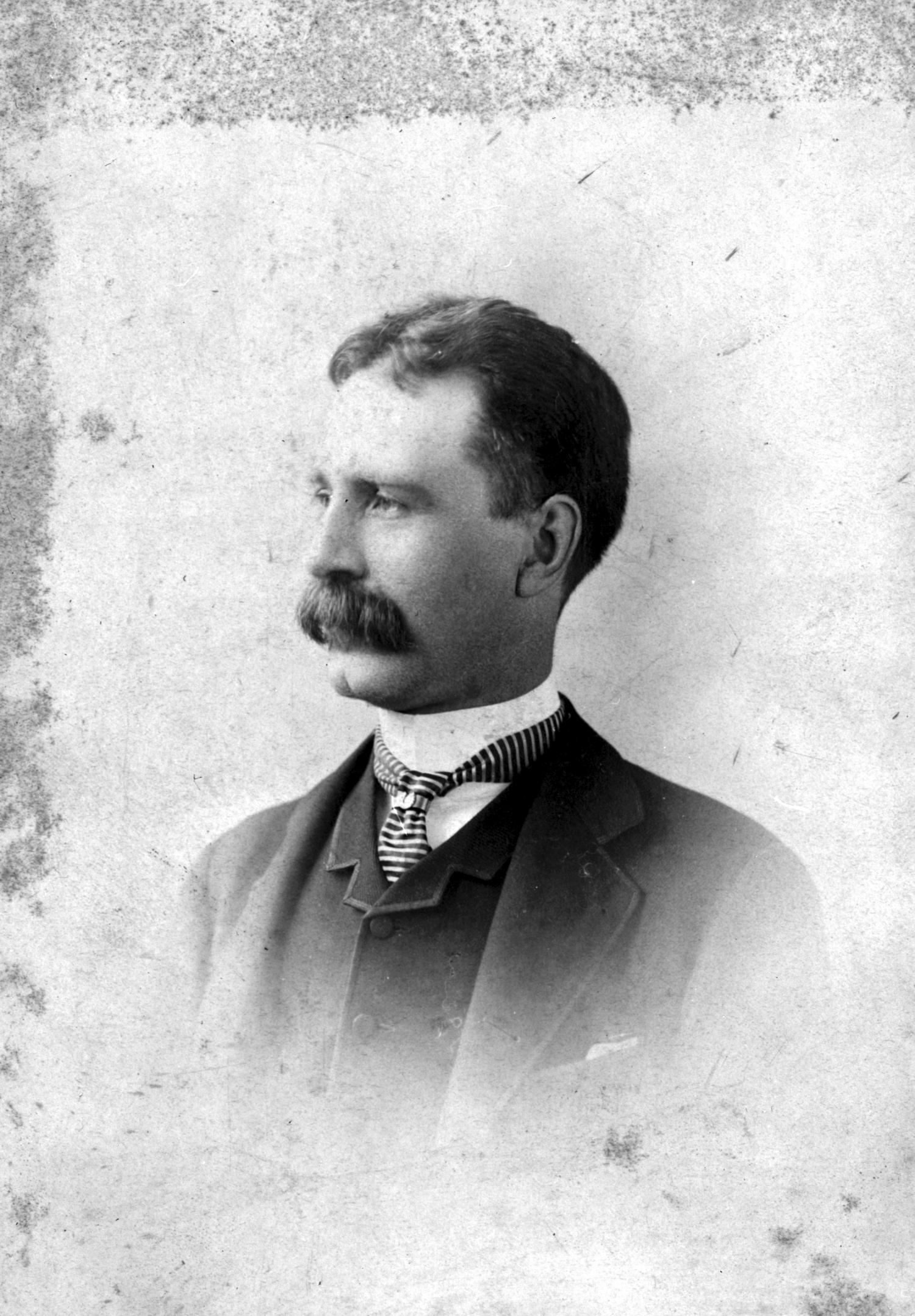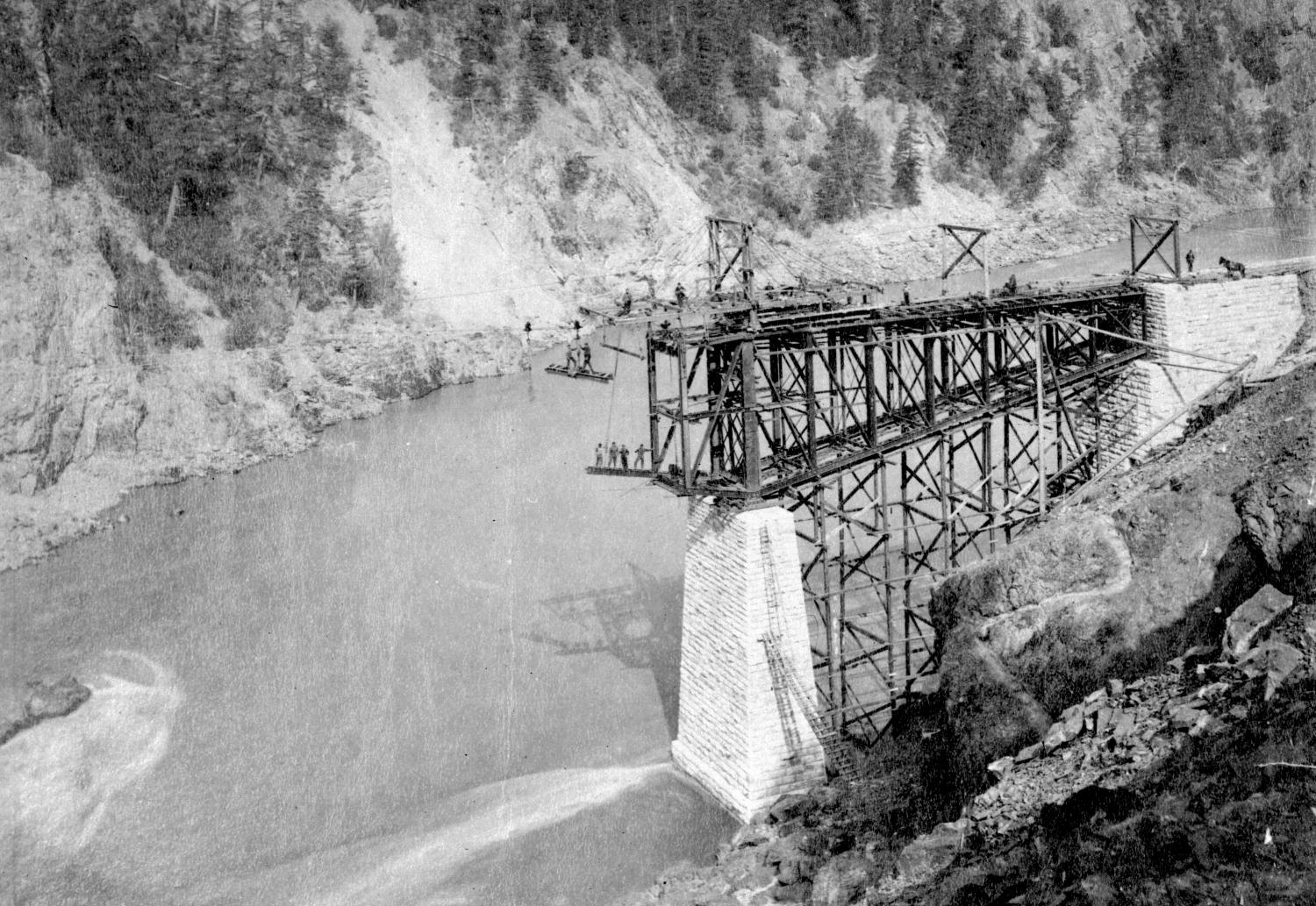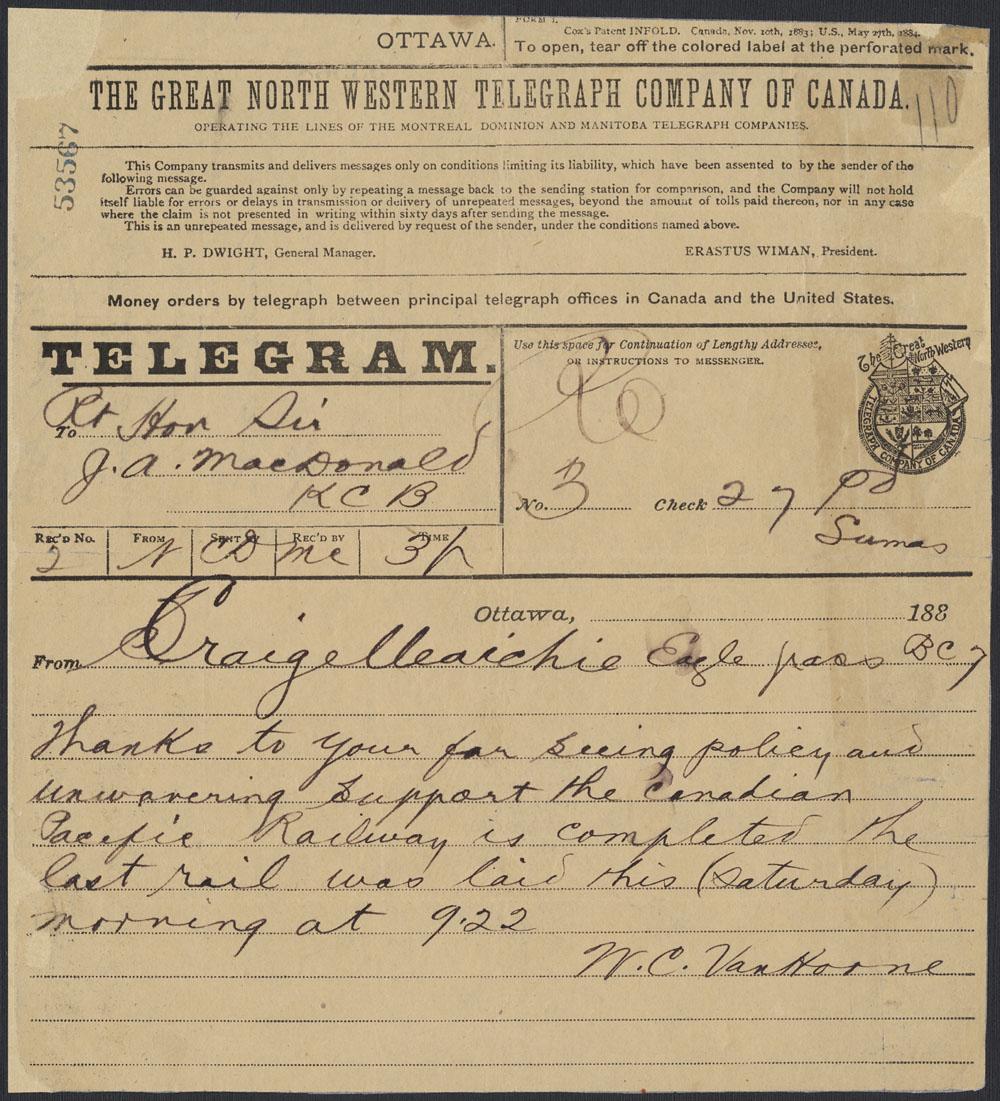Construction Begins on CPR
Following scandal and threats to secede, work finally starts on the transcontinental railway
Date: 1881
In 1871, the Government of British Columbia wanted a wagon road that would connect it to the new Dominion of Canada. Canadian leaders, meanwhile, held aspirations of being a nation spanning from “sea to sea.” An agreement was reached: B.C. would join the Confederation, and within 10 years Canada would build not a road but a transcontinental railway.
Except things weren’t so simple. Political infighting and disagreements over the specifics of the railway’s route beleaguered the project from the start, causing massive delays. Revelations of palm-greasing almost upended the project: Prime Minister John A. Macdonald’s appointee to head the Canadian Pacific Railway (CPR) syndicate had donated money to his re-election campaign. What would later be known as the “Pacific Scandal” tarnished Macdonald’s reputation, forcing him to resign in 1873.
When Alexander Mackenzie and the Liberals took over, the project saw little progress. Canada was undergoing a recession, and the federal government now had little interest in spending money on a new railway. In response, B.C. threatened to leave Confederation. Then, when the planned terminus was moved from Vancouver Island to Port Moody, petitions circled the island calling for a separation from both B.C. and Canada.
In the election of 1878, Macdonald’s pro-railway Conservatives reclaimed control, but the challenges of the region’s topography were one more hurdle to clear. The CPR’s route hugged the south, cutting west across the Prairies through the Rocky Mountains and into British Columbia. The miles of mountainous terrain posed challenges for surveyors, engineers and workers. For the most challenging sections, the CPR contracted a California-based syndicate led by Darius Ogden Mills and managed by Andrew Onderdonk. The conditions were dangerous for the labourers, approximately 17,000 of whom were temporary Chinese workers.
Construction on the railway proved profitable for local businesses who supplied timber for the tracks, lumber for the buildings, and food and entertainment for the workers in the various restaurants and saloons. But this boon was only temporary. The flow of cash mostly dried upon the completion of the railway. But not for the CPR, which saw the most benefit. For its work, the company received a cash subsidy worth $25 million, a land grant of 25-million acres in Western Canada, tax concessions, and a particularly controversial clause that gave them a 20-year monopoly across the western territories. These gifts endowed the CPR with immense real estate power. The railway syndicate now had control over the region’s most profitable land and the singular ability to determine where the biggest cities would go.
Sources:
1. Chow, Lily. Blood and Sweat over the Railway Tracks. Ronsdale Press, 2015.
2. Belshaw, John Douglas. “The Railway.” Canadian History: Post-Confederation, BC Open Textbook Project, 17 May 2016, opentextbc.ca/postconfederation/chapter/2-9-the-railway/.
3. Building the Railway. Province of British Columbia, 19 Jan. 2017, www2.gov.bc.ca/gov/content/governments/multiculturalism-anti-racism/chinese-legacy-bc/history/building-the-railway.
4. Canadian Pacific Railway. Royal B.C. Museum, royalbcmuseum.bc.ca/exhibits/bc-archives-time-machine/galler08/frames/cpr.htm.
5. Chow, Lily. Chasing Their Dreams: Chinese Settlement in the Northwest Region of British Columbia. Caitlin Press, 2000.
6. Lavallé, Omer. “Canadian Pacific Railway.” The Canadian Encyclopedia, 6 Mar. 2008, www.thecanadianencyclopedia.ca/en/article/canadian-pacific-railway.
7. Turner, Robert D. West of the Great Divide: an Illustrated History of the Canadian Pacific Railway in British Columbia, 1880-1986. Sono Nis Press, 1988.





